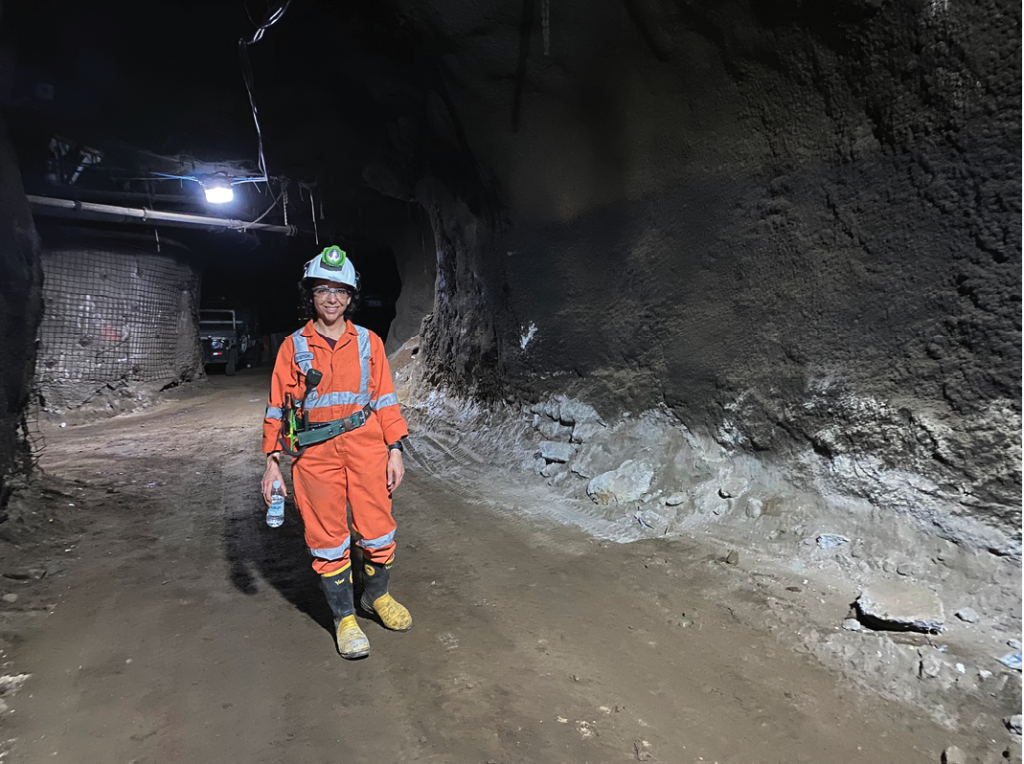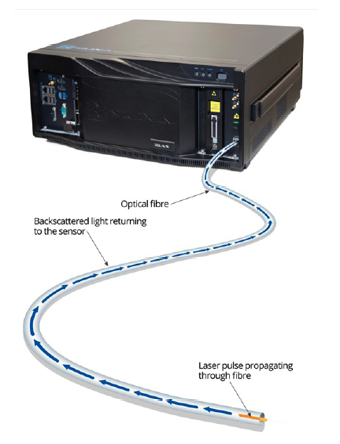Clean solutions to the challenges in mine operations

As a leading independent provider of fiber-optic-based distributed sensing solutions, Silixa strives to secure safer, more sustainable future for people and planet. The company is committed to accelerate innovation in the mining sector to make it safer, more productive, and energy efficient. By introducing modern technologies and solutions already proven in other industries, the company helps bridging a gap between the present and the future in the struggle for clean mining.
These future-proof industrial automation solutions have experienced significant uptake over the past few years predominantly in minerals processing facilities and are poised for future growth.

Recently, I had the opportunity to discuss the latest solutions, offered by Silixa to the wide range of challenges faced by the mining industry, with Zara Anderson (ZA), vice-president, mining, who is currently based in Kingston, Ont.
CMJ: Can you talk to us briefly about the history of Silixa and how you became vice-president, mining? Why did you accept the challenge?
ZA: Silixa was established in 2007 to develop the next generation high-precision distributed fiber sensing interrogators. As Silixa expanded and served many industries, it was recognized that the mining industry can immensely benefit from the technology. So, Silixa established a dedicated mining business, and I joined the company to take part in this journey.
This was an exciting opportunity, bringing this technology to the mining industry at the right time, as the industry is on its journey towards net zero, improved productivity and safety, and enhancing ESG path, while it is also relied upon to supply the world with critical minerals required for renewable energy.
CMJ: What are you enjoying about this phase of your career, and what are some of the challenges?
ZA: It is exciting to be part of the mining industry now. We are making rapid changes to our ESG path, adopting new technologies to enhance safety and productivity, and we are a big part of the transition to renewable and green energy. The industry is facing a shrinking workforce, more remote mine operations, and increasingly higher costs. These circumstances can make it more challenging for mine operations to adopt and implement new technologies timely and efficiently. Recognizing some of these difficulties, Silixa has been partnering with several mine operators to design and implement solutions that fits the mines restrictions and requirements.
CMJ: What is the current portfolio of Silixa?
ZA: Silixa, an award-winning innovator, offers the complete portfolio of distributed sensing solutions across many sectors globally. Our end-to-end solutions allow high resolution temperature, strain, and acoustic measurements even in the most hostile settings. Silixa’s high-fidelity technology combined with our unique geosciences skillsets has allowed us to partner with government, research institutes, and various industries around the world in the journey to energy transition. Our technology and services apply to many environmental, geotechnical, and industrial settings, such as carbon capture and storage (CCS) and many natural and induced hazard monitoring like earthquakes, volcanoes, melting icecaps and shoreline erosion.
CMJ: What does Silixa have to offer to the mining sector? How can you help tackle the industry’s most pressing challenges?
ZA: As I mentioned, we offer a portfolio of proven distributed fiber optic sensing-based solutions to the mining industry. They enhance productivity, minimize, risks and ensure sustainability by providing more reliable and cost-effective means of geophysical assessment as well as asset and process monitoring. We have chosen four unique turn-key solutions across the life cycle of the mining industry:
1 Our DamPulse solution provides an integrated sub-surface platform for monitoring seepage, deformation, and seismic risk/imaging for tailings storage facilities. Statistics indicate that about 20 tailings dams fail every decade. By providing early alerts of potential problems, this dam monitoring solution helps mine operators tackle two of their biggest challenges: managing water in tailings dams and maintaining the safety of dams. The system can detect even the smallest changes in the dam structure that could otherwise go unnoticed with less sensitive, conventional technologies. This monitoring system addresses issues of dam stability, public safety, and environmental protection. Delivering ultra-HD quality distributed temperature, strain, and acoustic measurements in real time, the system offers early alerts of potential problems, minimizing the risk of dam failures.
2 A wide range of geotechnical and rockmass response monitoring solutions using our combined Carina/iDSS systems.
3 Seismic-based mineral exploration solutions using our iDAS and Carina sensing systems.
4 Finally, a unique DAS-based flow metering solution for process control. This non-intrusive flow metering solution enables the measurement of water flows across multiple points in a mine or plant. Real-time flow rate information helps operators better understand how water is being used, enabling them to minimize consumption.
CMJ: How can these technologies help the mining sector move to a low carbon future?
ZA: Our technology uses optical fiber cables as sensors. Since fiber optics is relatively low cost, and low usage of raw material while it allows for high-resolution monitoring of very large structures, it reduces the environmental footprint for the supply of sensors and infrastructure on site as well as the footprint for installation and post-install maintenance. Their ultra-high sensitivity enables them to deliver precise geophysical information with a much smaller environmental footprint than conventional technologies. The technology allows for real-time monitoring of remote operations, reducing traffic and material onsite. In seismic exploration applications, the disturbance to surface is significantly reduced, and the technology can acquire data using less disruptive seismic sources further reducing the environmental footprint. During process metering our non-intrusive FiberWrap solution not only optimizes processes and flow distribution, but also helps to achieve a sustainable balance between water supply, consumption, and environmental and operational risks. Engineered to reduce energy consumption, it requires no power at the flow measurement zones on site.
Most importantly, however, the output of our systems provides real-time high-resolution data that allows mines to make proactive decisions to reduce hazard and enhance productivity and process control.
CMJ: Finally, how does the future of the technology look like to you?
ZA: Distributed fiber optics technology is rapidly growing in many applications and is now widely recognized as a disruptive technology and a foundation for digital transformation. Silixa developed a reputation for revolutionizing multiple industries. As the only independent leading provider of CCS solutions, and a front runner in the mining sector, we will continue to partner with mines to implement unique solutions using dedicated teams with domain expertise in the industry. I believe Silixa will continue to grow and be relied upon by our clients as the world moves towards net zero carbon emission with the right technologies and partnerships.
Comments